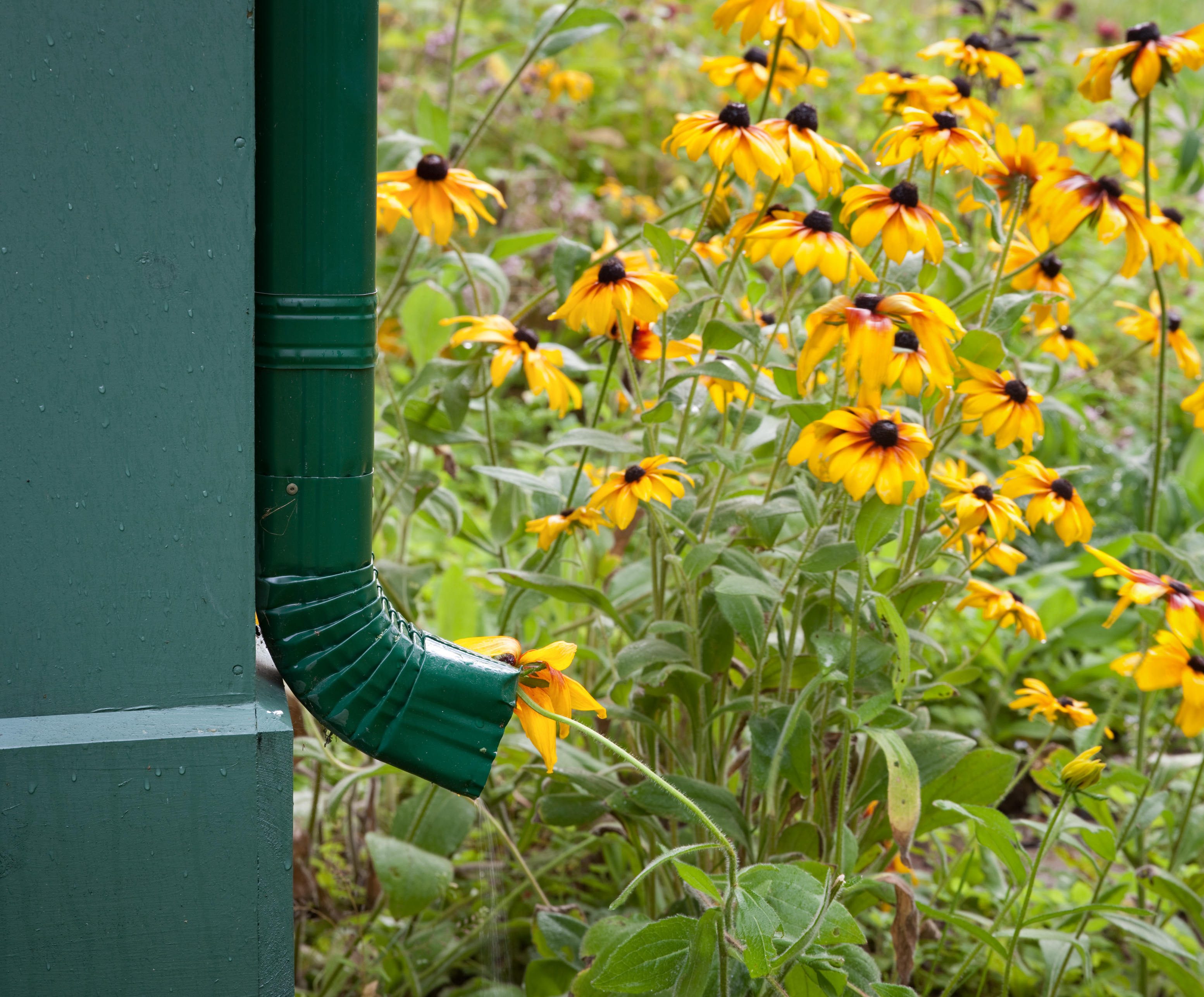A rain garden can be a beautiful and useful addition to your landscape to soak up excess water. Similar to a swale, rain gardens are shallow depressions in which water can collect during a storm and slowly percolate into the soil. Placed near a runoff source, rain gardens are an inexpensive way to reduce flooding and put excess water to use.
The best plant varieties for a rain garden are native plants that require minimal care and watering between downpours. The edges of a rain garden will dry out more quickly than the middle, so plants with the highest tolerance for wet soil are planted in the center where the soil remains submerged for the longest period of time. Most rain gardens are planted with grasses and flowers, selected for their beauty and hardiness, as well as to attract pollinators. They can also be used to grow edible plants, with some caution concerning pollutants that may flow into the garden with the storm water. Because toxins may accumulate in the leaves and roots of plants, select edible plants that fruit rather than leafy greens or root vegetables.
Related to rain gardens are pond and bog gardens. Ponds catch and hold water like a rain garden, but prevent the collected water from draining into the soil by the use of an impermeable liner. A bog garden is a depression in the earth that collects water, allowing it to percolate into the soil slowly through a permeable liner. All three types of water gardens have great potential for food production in excessively wet areas.
10 Solutions for Soggy Soil, Houzz
7 Surprising Edibles for the Rain Garden, Hobby Farms
Rain Gardens: A How-To Manual for Homeowners, University of Wisconsin Extension
Bog Gardens, Royal Horticulture Society
Edible Water Garden Design, Plants for a Future
Photo credit: Kevinbrine | Dreamstime.com – <https://www.dreamstime.com/stock-photo-rain-gutter-drain-brown-eyed-susans-image43433437#res11669805” Rain Gutter Drain>


